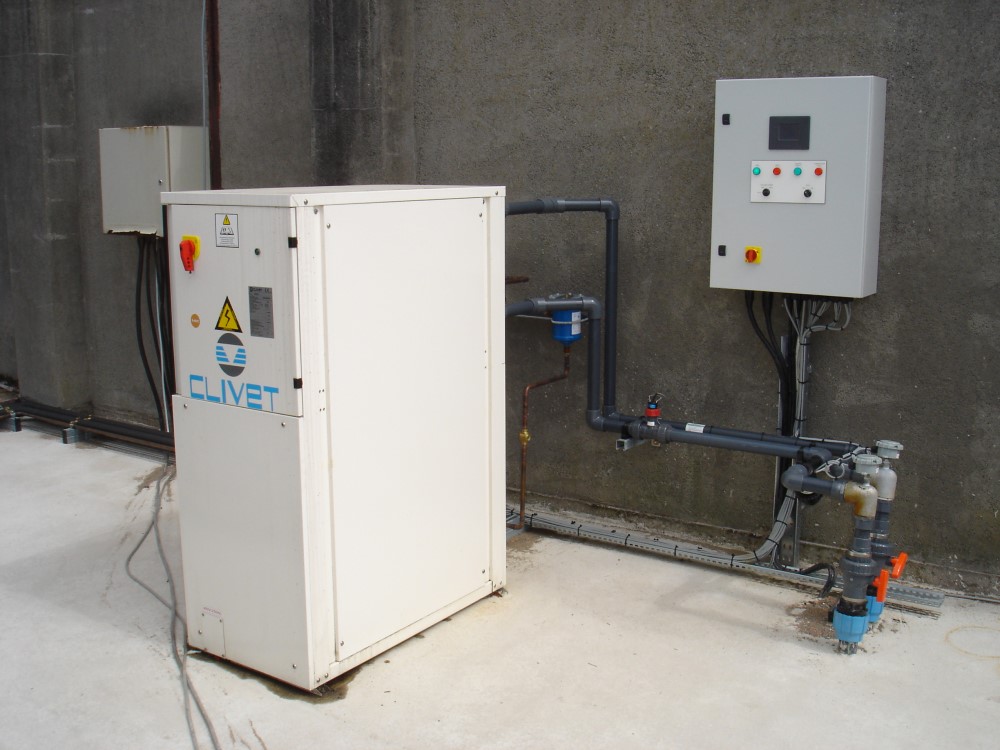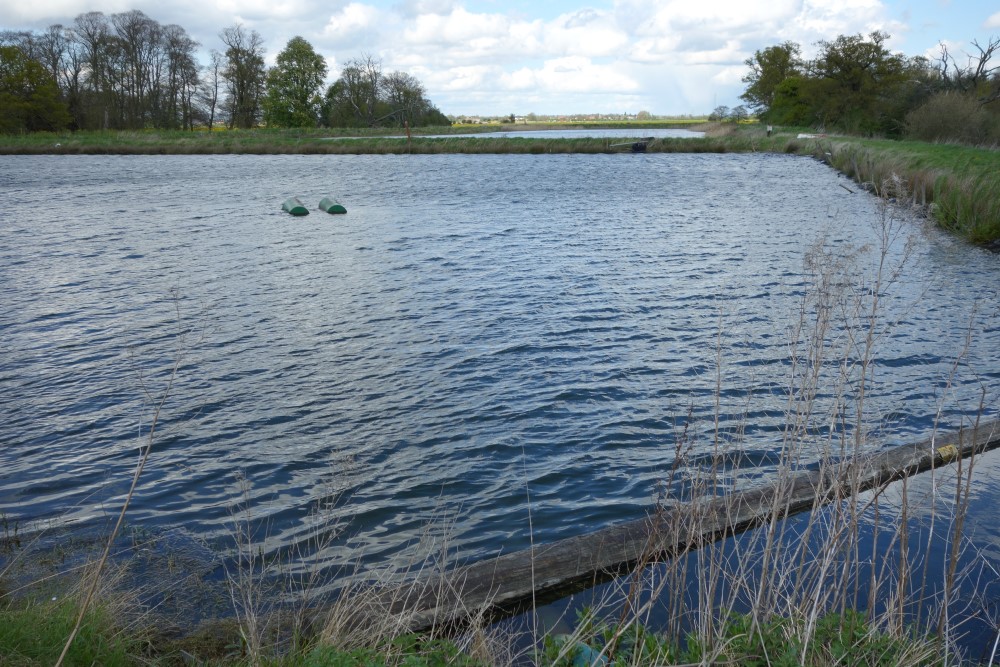Please click here to access the main AHDB website and other sectors.
- Home
- Knowledge library
- The five types of heat-pump system
The five types of heat-pump system
An explanation of each of the five types of heat-pump system, how each works and the factors to consider when choosing a system to install.
Back to: A detailed look at heat pumps and how they work
There are five types of heat-pump system, which differ according to the heat source.
Vertical closed loop boreholes
This approach is very effective and requires minimal land. Boreholes (usually around 150 mm in diameter) are drilled vertically, typically up to 150 metres deep. Collector pipes filled with glycol liquid are inserted as a ‘closed loop’ into the borehole, which is backfilled with a thermal grout. The loops are connected via flow and return to a manifold chamber and the heat pump.
Drilling boreholes can be costly, so this type of heat-pump installation is used when there is no water source available or the amount of land available is insufficient or unsuitable.
|
Pros |
Cons |
|
Reliable. Boreholes sized to meet system requirements No planning, EA approval or licences required High efficiency (though less than water-source heat pump) Minimal maintenance Can also provide cooling as the chilled water returning to the boreholes can be intercepted and used, which also replenishes the boreholes so that fewer are required |
Drilling can be expensive, typically £35/m Higher capital cost Most horticultural applications will require many vertical boreholes. At 150 m deep, 13 boreholes in 550 m3 would be needed to yield 100 kW, approximately costing around £70K |
Open loop boreholes
Open loop boreholes can be utilised when there is a reliable, consistent subterranean supply of ground water. Establishing the suitability of a water supply accurately requires the drilling of a test borehole, but an initial desktop study can be undertaken by a hydrogeologist, usually at low cost.
In an open loop system, water taken from a borehole provides the heat. The water can then be used for other purposes or returned to the ground in a second borehole that is some distance from the first.
Water abstraction
Abstracting water for use in an open loop heat pump requires consent and a licence from the Environment Agency. Water is being returned to the ground after use. Obtaining approvals and licences can be time-consuming – sometimes taking up to 12 months – although non-consumptive licences tend to be easier and quicker. Temporary licences may be obtained while the application is being progressed. However, obtaining a temporary licence is no guarantee of full approval and drilling costs will be significant, so proceeding without approval is risky.
Desk surveys are not a guarantee that water will be available in sufficient quantity. A desk survey will provide a strong indication of the available water supply and your consultant hydrogeologist should advise you of any potential issues, as well as the degree of certainty associated with your land. It is advisable to make a test drilling to measure the actual water flow before committing to the full heat-pump installation.
Nurseries or holdings with an existing borehole for irrigation water can consider using them as a heat source, thereby saving additional drilling costs, albeit the amount of heat may be limited unless the water quantity is sufficiently large or more water can be made available.
|
Pros |
Cons |
|
Cheaper than closed loop boreholes Very efficient Water temperature stable year round Minimal disruption to site |
Drilling can be expensive, typically £35/m Water extraction licences required Filtration set required, specified by the Environment Agency and potentially expensive Test borehole required with no guarantee of performance or grant of licence |
Example of a lake/river water source for a closed loop heat pump.

Image courtesy of NFU Energy.
Horizontal loop ground source
This approach is more cost-effective than a vertical loop system. A horizontal loop system can be a good solution when sufficient land is available. Trenches are excavated to a depth of 1.2 m and collector pipes laid. As an approximate guide, for every acre of glasshouse requiring a frost-free environment (heating to 6˚C), approximately one acre of land will be needed for the collectors.
|
Pros |
Cons |
|
Reliable Groundworks likely to be considerably cheaper than a vertical closed loop borehole system for equivalent heat output |
Requires a relatively large land footprint. Typically, 1,000 m2 to provide 12˚C temperature lift for each 1,000 m2 glasshouse Potential damage to buried collectors by agricultural machinery unless sufficiently deep Restriction of future groundworks on the land |
Water-source closed loop heat pump – lake/river
Reservoirs, lakes or even rivers can be used as closed loop water sources and, if these are available, are cost-effective solutions. The collectors are placed in the water in stacked coils and tied down. The collectors will function even when the surface water has frozen.
The labour costs associated with this are less than both the ground-source options and there is less disturbance during the installation.
|
Pros |
Cons |
|
Cheaper than closed loop boreholes No licences required for lakes High efficiencies Very reliable Little maintenance |
Lake or body of water needed nearby Large lake required, at least 1.5 m deep Waterway approval may be needed for rivers Boats/debris could damage pipework |
Example of a lake/river water source for a closed loop heat pump.

Image courtesy of NFU Energy.
Air source heat pump (ASHP)
As the name suggests, air-source heat pumps use neither ground or water as the heat source but the ambient air around them. However, the technology is identical after the heat has been collected. The RHI rate for ASHP is considerably less than for ground-source and water-source heat pumps and while they could be a practical alternative to fossil-fuel heating for packing sheds, offices and other relatively small spaces, the size and low return on investment for an ASHP of sufficient capacity for heating greenhouses will be prohibitive.
|
Pros |
Cons |
|
Lowest capital cost Reliable Can be used for heating and cooling |
Available capacities generally insufficient for heating greenhouses Can sometimes be noisy Considerably lower RHI tariff |
Useful links
Visit our GrowSave pages to read more about energy-related topics
Got a question. Ask a member of the team:
An example of an air source heat pump.

Image courtesy of NFU Energy.
Topics:
Sectors:
Tags:

